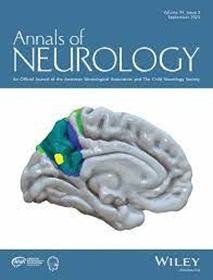Frequency and Early Predictors of Cognitive Deterioration in Amyotrophic Lateral Sclerosis: A Longitudinal Population-Based Study
Abstract
Objective
The objective is to evaluate cognitive and behavioral progression and identify early predictors of these changes in a cohort of amyotrophic lateral sclerosis (ALS) patients.
Methods
A total of 161 ALS patients were tested at diagnosis (T0), and 107 were re-tested after 1 year (T1) using cognitive/behavioral tests. All patients underwent whole-genome sequencing, and 46 patients (ALS-normal cognition [CN]) underwent [18F]Fluorodeoxyglucose positron emission tomography.
Results
Of the 161 patients, 107 were re-rested at T1; non-retested patients included 10 with frontotemporal dementia and 44 who were either non-testable or deceased. At T0, 67 patients (62.6%) were classified as ALS-CN, whereas 40 (38.4%) showed some degree of cognitive/behavioral impairment. Eighteen ALS-CN patients (26.9%) experienced cognitive decline at T1. Phenoconverters had lower baseline scores in letter fluency (Letter Fluency Test [FAS]) (p < 0.001), Edinburgh Cognitive and Behavioral ALS Screen (ECAS) verbal fluency score (p = 0.017). Both tests were independently predictive of phenoconversion in binary logistic regression models, with optimal cut-off scores of 28.75 and 14.2, with good sensitivity and specificity. Other predictors included older age, lower education, and ALS-related genetic variants. Phenoconverters were hypometabolic in the left temporal lobe. Thirteen (32.5%) of the 40 patients with cognitive impairment at T0 worsened by T1, with FAS (p = 0.02) and the ECAS verbal fluency score (p = 0.023) predicting further decline.
Interpretation
Approximately 30% of ALS patients experienced cognitive/behavioral decline within the first year after diagnosis. FAS and ECAS verbal fluency were predictive of cognitive phenoconversion. Our findings highlight the importance of early detection of at-risk individuals and the need for longitudinal cognitive assessments to monitor disease progression. ANN NEUROL 2025;97:1122–1133

 求助内容:
求助内容: 应助结果提醒方式:
应助结果提醒方式:


